An Overview of Behavioral Interventions in Autism Spectrum Disorder
Behavioral interventions are foundational to autism treatment, offering scientifically supported methods to improve communication, social skills, and everyday functioning. Rooted in learning theory, these approaches utilize strategies that modify environmental factors to promote positive behaviors and diminish problematic ones. This article explores the various types of behavioral therapies, their principles, techniques, evidence of effectiveness, and how they are implemented to support individuals with autism across their lifespan.
Main Types of Behavioral Therapy for Autism
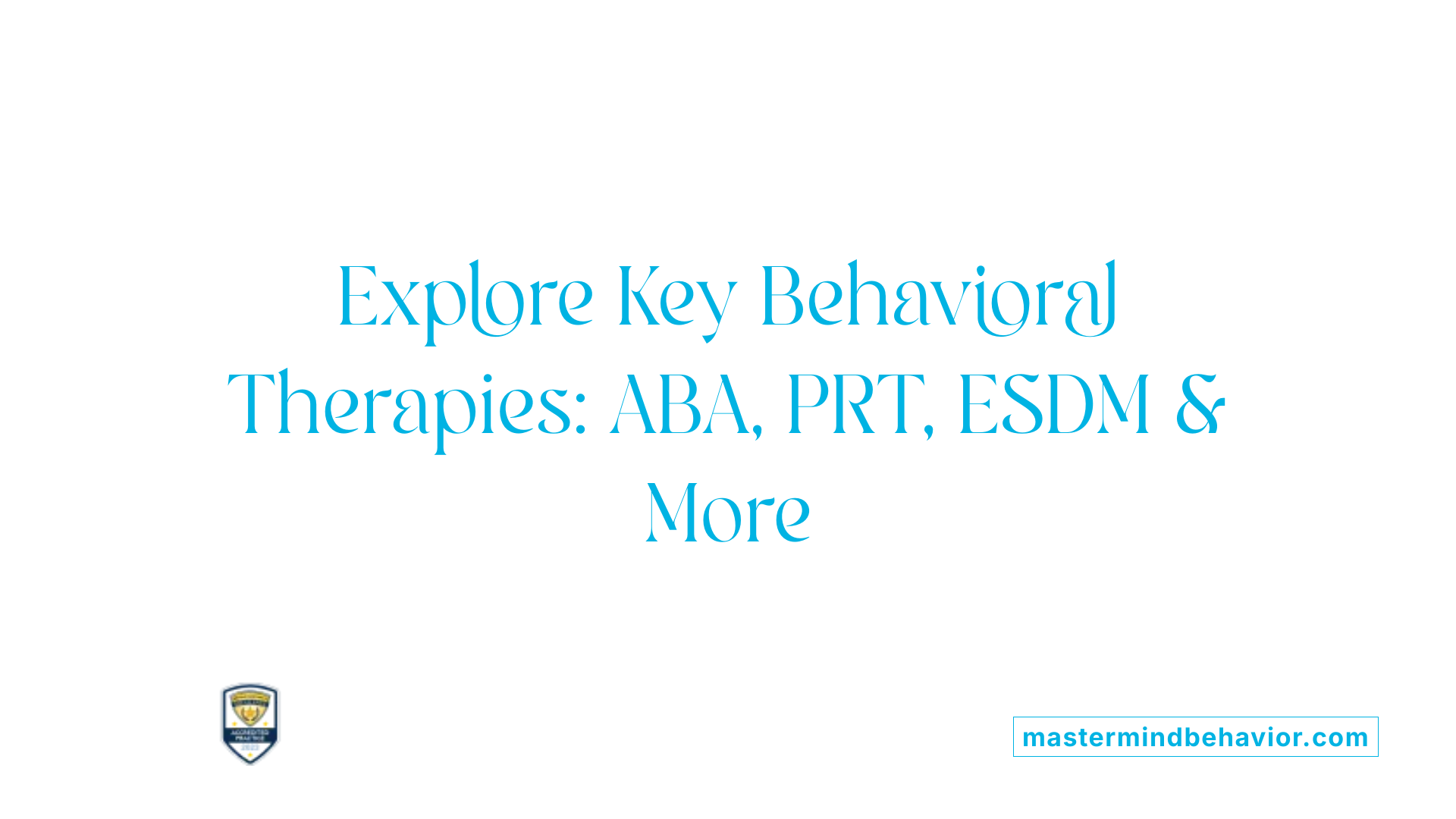
What are the main types of behavioral therapy approaches for autism?
The primary behavioral therapy methods for autism are based on the science of learning and behavior, most notably Applied Behavior Analysis (ABA). ABA uses reward-based strategies to encourage positive behaviors like communication, social interaction, and daily living skills while reducing harmful behaviors. Variations of ABA include Pivotal Response Treatment (PRT) and the Early Start Denver Model (ESDM), which are tailored to individual needs and often implemented early in development.
Other approaches focus on social skills training that enhances peer interactions and understanding social cues. Parent-mediated interventions involve training parents to carry out strategies at home, enabling consistent support across environments. Complementary therapies, such as speech-language therapy and occupational therapy, are often integrated with behavioral strategies to target communication and functional skills.
Together, these treatments form the basis of evidence-supported behavioral interventions, which are most effective when started early and conducted intensively.
Principles, Techniques, and Methods Underpinning Behavioral Interventions
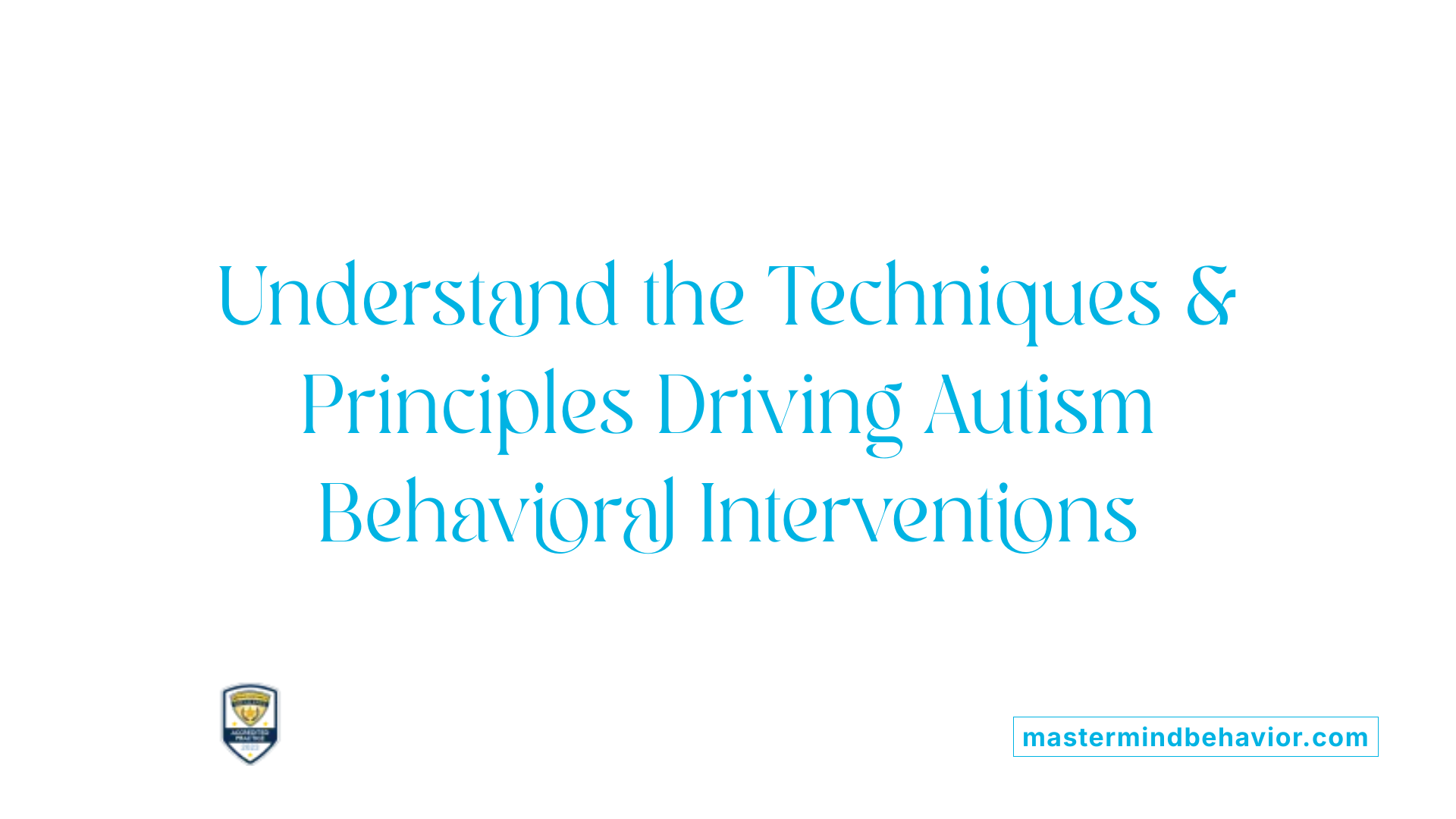
What principles and techniques are used in behavioral interventions for autism?
Behavioral interventions for autism are primarily rooted in the principles of applied behavior analysis (ABA). These principles are based on operant and classical conditioning, which demonstrate how behaviors can be acquired, maintained, or eliminated through environmental interactions. Common techniques include positive reinforcement, prompting, extinction, modeling, behavior chaining, and redirection. These strategies work together to increase helpful behaviors like communication and social skills while reducing problematic behaviors. Programs such as Early Intensive Behavioral Intervention (EIBI), Naturalistic Developmental Behavioral Interventions (NDBI), and social skills training are tailored to individual needs, utilizing structured methods like discrete trial training (DTT) and pivotal response training (PRT). Overall, these principles emphasize creating data-driven, individualized approaches that modify environmental factors to foster meaningful behavioral change.
What techniques are utilized within behavioral interventions?
A variety of specific techniques are employed within behavioral interventions to promote positive changes. Positive reinforcement rewards desirable behaviors, encouraging their occurrence. Prompting provides cues or guidance to help the individual perform a target behavior, with prompts gradually faded to promote independence. Behavior chaining involves breaking complex skills into small, manageable steps, reinforcing each step to build toward the full skill. Shaping reinforces successive approximations of a desired behavior, gradually guiding the individual toward the targeted response.
Data collection is a cornerstone, systematically recording behaviors to evaluate progress and guide therapy adjustments. Functional Behavior Assessment (FBA) identifies the triggers or purposes of problematic behaviors, such as seeking attention or avoiding tasks. This assessment informs personalized intervention plans. Many interventions employ naturalistic approaches, integrating learning into daily routines and social contexts to improve skill generalization. Structured settings, like dedicated therapy rooms, enable focused teaching sessions, ensuring consistency and effectiveness.
What role does data collection and analysis play in behavioral interventions?
Data collection and analysis are essential components of successful behavioral intervention programs. Precise data recording allows practitioners to monitor behavioral patterns, measure progress, and determine the effectiveness of interventions. Regular analysis helps identify trends, make evidence-based decisions, and refine strategies—such as adjusting reinforcement schedules or prompts. In functional behavior assessments, data helps pinpoint the antecedents and consequences that maintain problematic behaviors, enabling the development of targeted, functional intervention plans. Continuous data collection ensures that interventions remain tailored to individual needs, promoting efficiency and better long-term outcomes.
How does functional behavior assessment (FBA) contribute to intervention planning?
Functional Behavior Assessment (FBA) is a systematic process that uncovers the reasons behind difficult behaviors. By analyzing antecedents, triggers, and consequences, FBA determines the function or purpose of a behavior—whether it is for gaining attention, escaping demands, or sensory stimulation. This understanding enables practitioners to design intervention strategies that directly address the underlying need. For example, teaching an alternative behavior that fulfills the same function or modifying environmental factors can prevent problematic behaviors. FBA makes interventions more personalized, reducing reliance on punishment, and fostering positive, functional behaviors that support greater independence and social integration.
What environments are used in behavioral interventions?
Behavioral interventions employ both naturalistic and structured environments to optimize learning. Structured settings, such as dedicated therapy rooms or classrooms, provide a controlled space for delivering interventions like DTT, ensuring focused and systematic instruction. Naturalistic environments—homes, community centers, or peer interaction settings—are used to embed learning into everyday routines. These environments promote the generalization of skills across various contexts and foster social initiation and functional independence. Combining both approaches ensures that skills learned are not only mastered in therapy but are also applied effectively in real-world situations, enhancing overall quality of life for individuals with autism.
| Environment Type | Description | Purpose |
|---|---|---|
| Structured Environment | Dedicated therapy rooms, classrooms | Focused, systematic teaching |
| Naturalistic Environment | Homes, community settings | Promote generalization and real-world skills |
| Combined Approach | Use of both structured and natural settings | Maximize learning transfer and social functioning |
Every child and adult with autism presents a unique profile of strengths and challenges, requiring tailored interventions. The application of these behavioral principles and techniques continues to evolve, supported by ongoing research and clinical best practices. Ultimately, the goal is to enhance adaptive behaviors, foster independence, and improve overall quality of life through scientifically grounded, personalized interventions.
Developmental and Relationship-Based Interventions in Autism
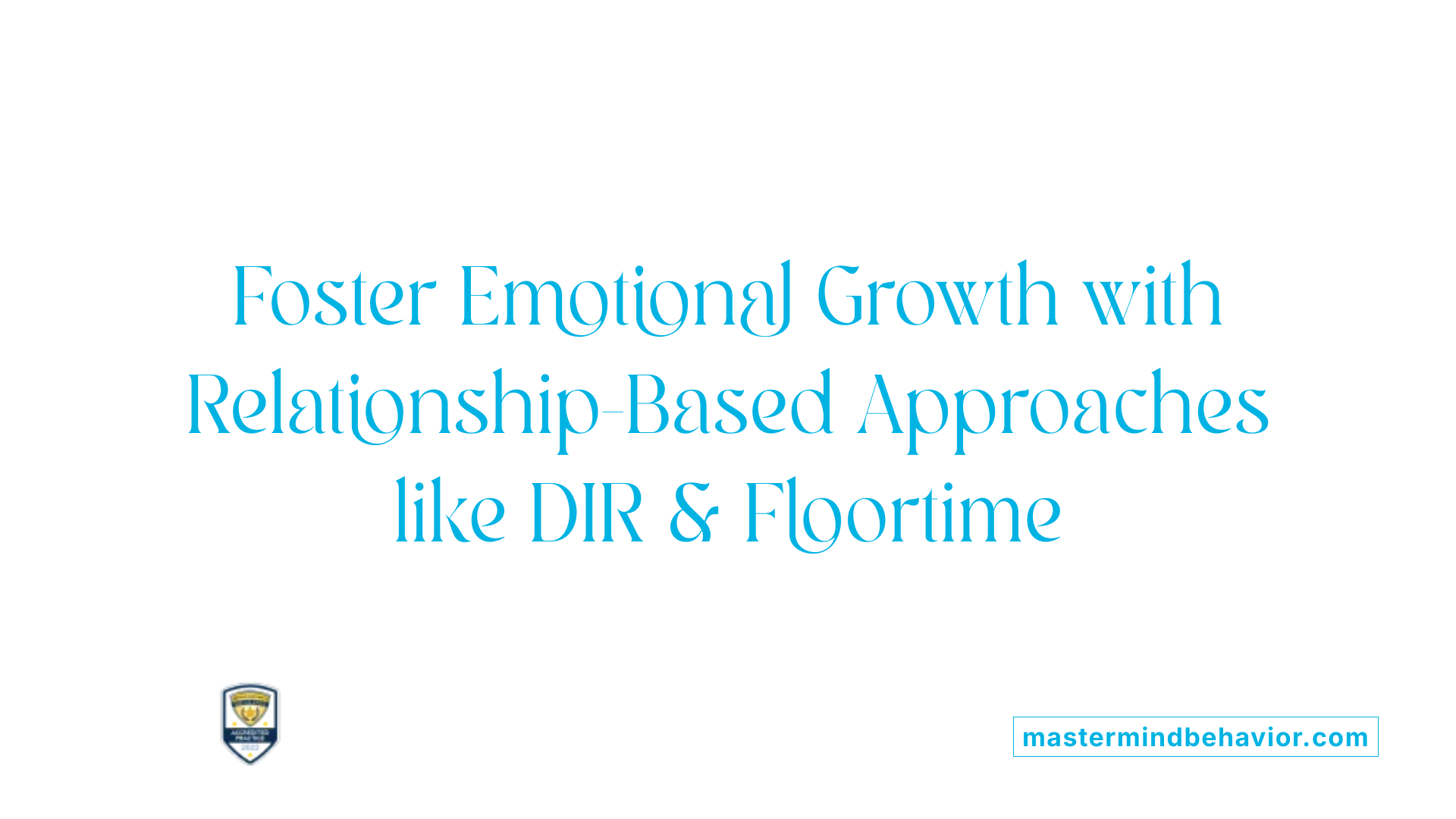
What are developmental and relationship-based approaches for autism?
Developmental and relationship-based approaches, such as DIR (Developmental, Individual difference, Relationship-based) therapy, Floortime, and Relationship Development Intervention (RDI), focus on nurturing social-emotional growth and constructing meaningful relationships. Instead of solely emphasizing observable behaviors, these strategies prioritize understanding each child's unique developmental profile, emotional states, and strengths.
These approaches involve engaging children through play, shared interests, and emotional connections, which motivate them to communicate and interact more effectively. They often use naturalistic, child-led activities that are aligned with the child's developmental level. Although rooted in developmental principles, they frequently incorporate behavioral techniques—like prompting or reinforcement—to help accelerate skill acquisition.
By emphasizing emotional bonds and individual differences, these methods aim to create a supportive environment where children feel safe and motivated to explore social interactions, helping them develop better social awareness, emotional regulation, and communication skills. This holistic approach complements other behavioral interventions by addressing the emotional and relational aspects of development.
How do relationship-focused therapies complement behavioral interventions?
Relationship-focused therapies such as DIR/Floortime and RDI naturally complement behavioral interventions by strengthening the social and emotional foundation necessary for learning.
While behavioral strategies, especially Applied Behavior Analysis (ABA), focus on teaching specific skills like language and social behaviors through reinforcement and structured tasks, relationship-based therapies prioritize emotional engagement, motivation, and trust.
These therapies help foster a positive emotional environment that increases a child's willingness to participate in learning activities. When children feel emotionally connected and secure, they are more receptive to behavioral techniques, which can lead to better generalization and maintenance of skills.
Integrating these methods creates a balanced approach: the relationship-based component builds motivation, emotional regulation, and social rapport, while behavioral methods help shape specific skills. This synergy supports comprehensive development, helping children with autism build meaningful relationships, communicate more effectively, and gain independence.
Educational and Social-Relational Strategies
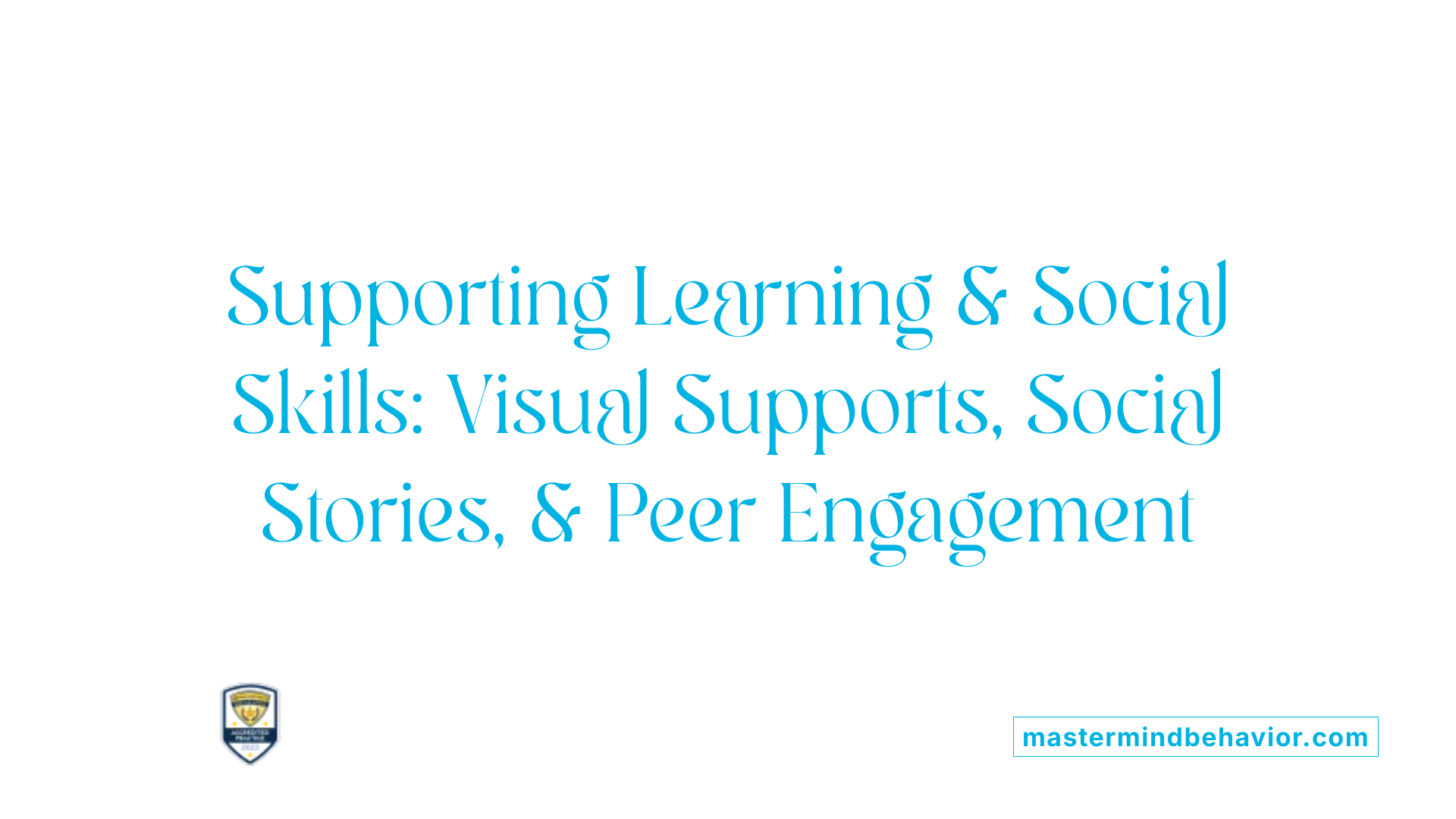
What educational strategies support children with autism?
Educational approaches tailored to children with autism focus on creating structured, predictable learning environments that cater to their unique needs. One prominent method is TEACCH (Treatment and Education of Autistic and Communication-related Handicapped Children), which emphasizes the use of visual supports, organized routines, and clear physical boundaries within classrooms. These strategies help reduce anxiety, improve understanding, and foster independence by making the environment more accessible.
In addition, social stories and social skills groups serve as valuable tools to teach children appropriate social norms, manners, and peer interaction skills. These interventions are designed to be engaging and understandable, often employing pictures, simple language, and role-playing to facilitate learning.
Family and peer involvement further enhances educational success. Training parents to support their child's learning at home and involving peers in social activities help generalize skills across settings. This collaborative approach promotes social integration, relationship building, and ongoing development.
| Approach | Main Focus | Benefits | Implementation Examples |
|---|---|---|---|
| TEACCH | Visual supports, routines | Reduces anxiety, enhances comprehension | Visual schedules, designated work areas |
| Social stories | Social norms, behaviors | Improves social understanding | Personalized stories, role-play |
| Peer skills groups | Social interaction | Builds friendships, social skills | Peer buddy programs, group activities |
| Family involvement | Consistent routines, support | Reinforces learning, reduces stress | Parent training, family sessions |
Tailoring educational strategies to meet individual needs ensures better educational and social outcomes for children with autism.
Medical and Complementary Approaches in Autism Treatment
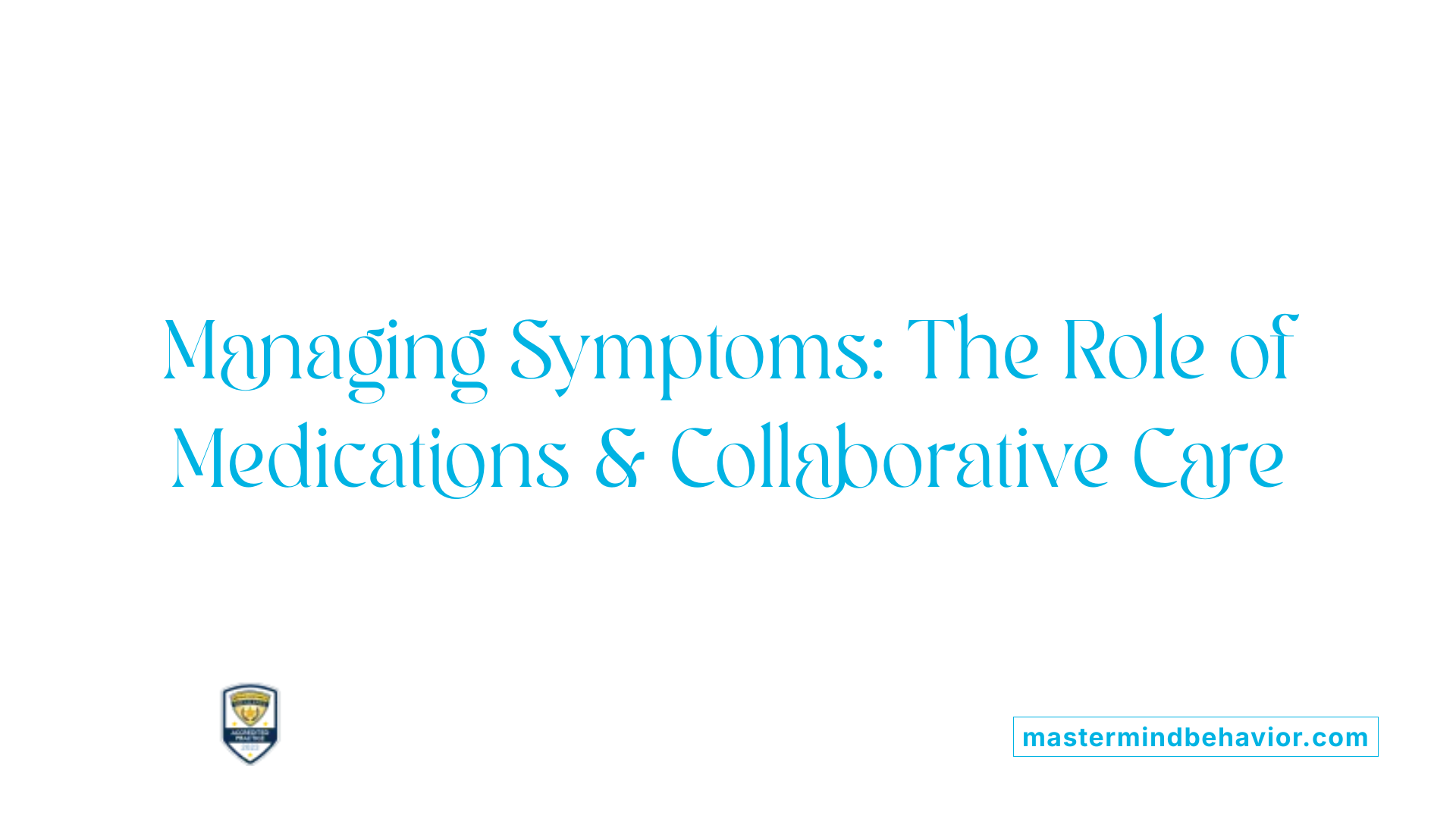
Use of medication for associated symptoms
Medications are not intended to treat the core features of autism, such as social communication challenges or repetitive behaviors. Instead, they can be effective in managing symptoms that often accompany autism, including anxiety, depression, seizures, sleep issues, and gastrointestinal (GI) problems. For example, certain medications may help reduce aggression, hyperactivity, or self-harming behaviors, thereby improving overall quality of life.
The decision to use medication should always be made collaboratively between families and healthcare providers. This ensures careful assessment of potential benefits versus side effects. Regular monitoring is essential to adjust doses or switch medications if necessary, aiming to optimize outcomes while minimizing risks.
The Broader Impact of Behavioral Interventions in Autism
Behavioral interventions are a cornerstone of autism treatment, supported by a substantial scientific foundation. These approaches, including ABA and developmental strategies like ESDM, offer individualizable, evidence-based pathways to improve communication, social skills, and daily functioning. When implemented early, with family involvement and tailored to individual needs, behavioral therapies can significantly enhance quality of life and independence for individuals with autism. As research advances and awareness grows, integrating behavioral science with other medical and social supports continues to optimize outcomes, empowering individuals and their families on their developmental journey.
References
- Behavioral Interventions for Autism Spectrum Disorder
- Treatment and Intervention for Autism Spectrum Disorder - CDC
- Behavioral Management Therapy for Autism | NICHD
- Autism therapy and intervention
- Behavioral Therapy for Autism Spectrum Disorder in Children
- Understanding Behavioral Therapy for Autism | Psychology Today
- Applied Behavior Analysis (ABA) | Autism Speaks
- Behavioural interventions - Autism CRC
- Understanding Behavioral Therapy for Autism: A Comprehensive ...









